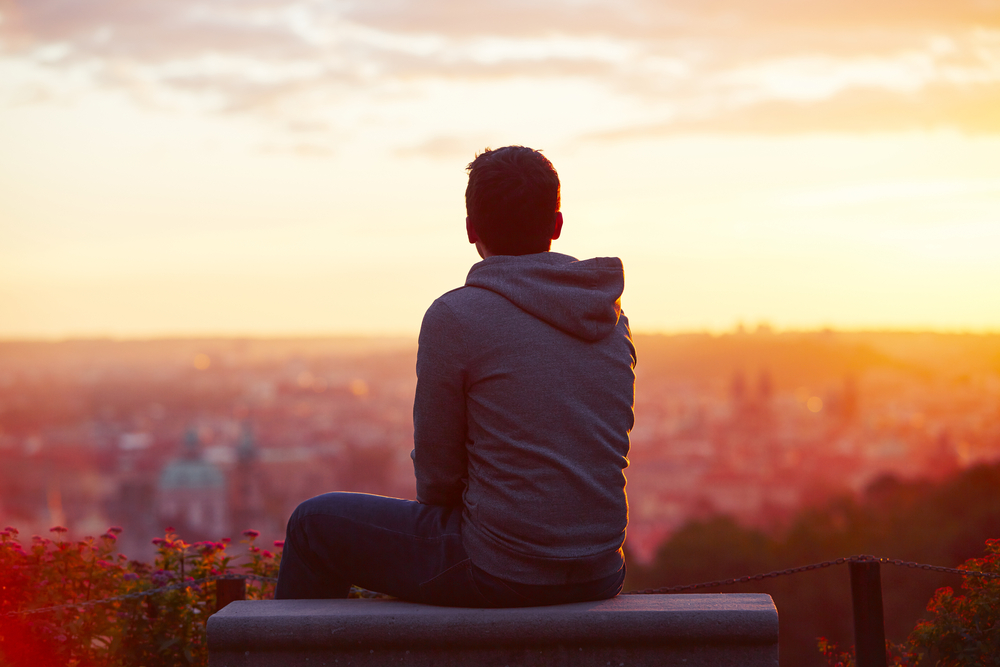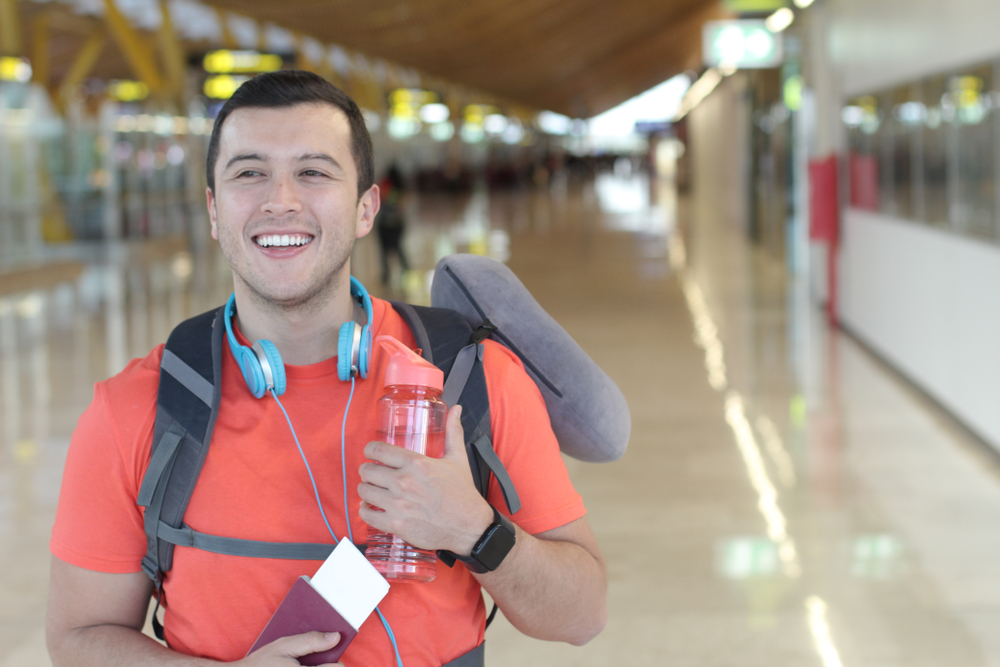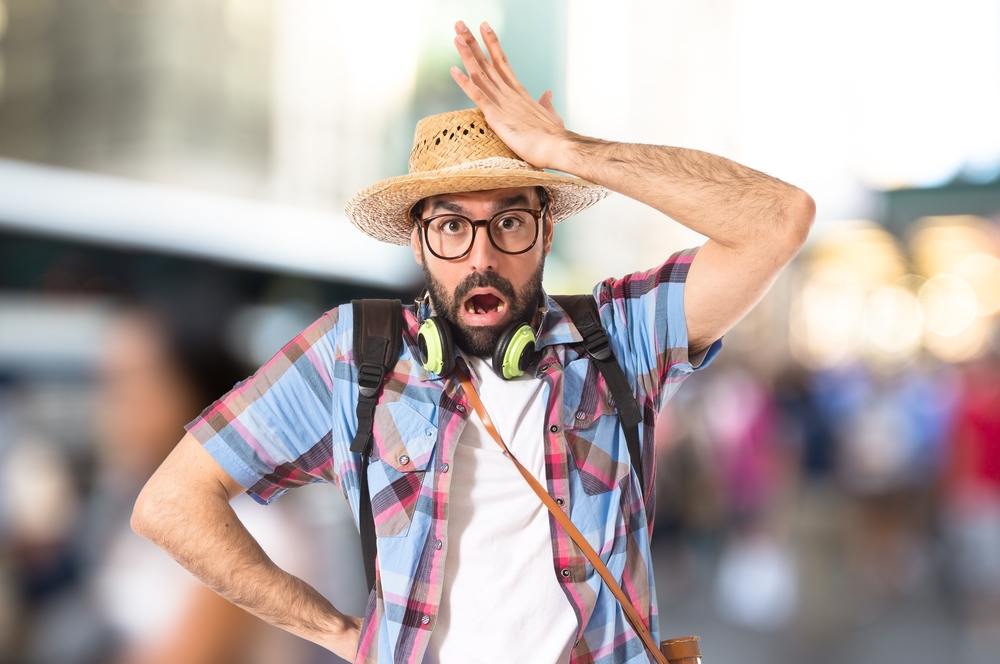Even the most enthusiastic solo travelers know that loneliness can sneak up on you while traveling the world. While your initial reaction may be to avoid those feelings, therapists say it helps to embrace the emotion.
“Just like you’re choosing to travel to experience new things, give yourself permission to feel different things throughout your journey,” says Samantha Bender, LCSW-S, a therapist at Octave based in Texas. “So often, the most exploring you do when you travel is within yourself.”
Her first suggestion is to ask yourself what you want to get out of your travel experience. Are you traveling solo because you want peace and quiet, and a feeling of independence? Or are you traveling solo so that you have the freedom to meet a lot of different people? Perhaps it’s a bit of both.
While you could tailor a trip to spend most of your solo travel adventure alone, there’s also group trips led by tour companies like Kensington Tours and Abercrombie & Kent that give you an opportunity to meet other travelers with similar interests.
Why Do You Feel Lonely When Traveling Solo?
When we experience amazing moments in our lives, like travel, we want to share it with others, explains Colleen Marshall, MA, LMFT, and Vice President of Clinical Care at Two Chairs.
“There is even research from the positive psychology world that when we do share something we are savoring or enjoying with others it increases our experience of happiness and sense of joy,” Marshall says. “When we are traveling, solo sharing is harder to do because those we care about are not readily available to share with or talk with.”
Her advice?
Think about how you will share your travel or experiences with others ahead of time.
“Maybe set up a video call with a loved one during a meal or end your day with sharing what you enjoyed,” Marshall says.
7 Ways To Avoid Feeling Lonely When Traveling Solo
While it’s normal to feel pangs of loneliness while solo traveling, you don’t want the feeling to overshadow your trip entirely. With that in mind, therapists and seasoned solo travelers share their top tips to avoid feeling lonely while traveling.
1. Before Your Trip, Come Up With A Plan To Handle Your Loneliness
Some tactics, Bender says, that can be part of your plan include:
- Bring some journaling prompts
- Download your favorite podcasts or songs for a mood lift
- Start a travel journal where you can collect mementos and photos
As part of your plan for preparation, create a plan for when you return home. Schedule an appointment with your therapist where you can share new revelations or insights that you gathered while on your trip.
2. Write Postcards While On Your Trip
Writing can be very therapeutic especially if you’re feeling lonely or dissociated, Bender says.
“When we write, it helps us feel present in our reality,” she says. “Try writing a letter or sending a postcard to a loved one while you’re on your trip. You can even send a note of gratitude to yourself so that you have something waiting for you in the mail to remind you of your experience.”
3. Consider Low-Energy And High-Energy Options To Address Feelings Of Loneliness
If you find yourself lonely on a trip, consider your energy level, and go over different high-energy and low-energy options you have, Bender recommends. This practice is applicable for daily life, but even more important when you’re traveling because it can be so tiring.
A high-energy option would be signing up for a group activity, such as a guided tour or a cooking class, she says. That is a structured way to introduce yourself to others while learning a new skill, and both can be healthy distractions or preventions for loneliness.
People-watching is a low-energy thing you can do to feel less lonely while you travel, she says. Embrace that time to people-watch as a way to connect to the world and the people around you.
4. Look For Opportunities To Connect With Others
While traveling, look for activities where you can connect with other travelers or locals, Marshall suggests. For example, rather than going through the museum alone, join a tour guided experience.
“Connection is all around us, we just need to join in,” she says.
Some other ways to meet people organically while traveling solo is to go to local cafes, markets, community events and learn about their culture, says Reen B. Patel, a Licensed Educational Board Certified Behavior Analyst. Participate in group excursions like day trips and tours, she suggests.
5. Co-Work in A New Place
Ahead of your travels, check out your LinkedIn to see if you have any connections in the destination that you’re traveling to, suggests Katya Varbanova, says CEO of Viral Marketing Stars. If you’re a digital nomad or traveling for bleisure (business plus leisure), rent a desk at a coworking space and meet some fellow travelers or locals. Another option is being a part of a member’s club like Soho House, she points out. The “Every House” membership unlocks access to the houses all around the world, including their amenities, like spas, screening rooms and events.
6. Book an Airbnb Experience
Musician Alissa Musto has taken dozens of solo trips over the past few years and recommends booking an Airbnb experience, which are hosted by locals and are popular among solo travelers who you can connect with over shared interests. These types of experience range from city tours to the ins and outs of beekeeping to learning the art of origami.
7. Volunteer With Other Travelers
Another idea? Give back to the place you’re visiting. The Hawaiian islands, for example, started the Mālama Hawai’i program to better connect tourists with Hawaiian land and culture.
“I’ve also found that volunteering is a great way to be part of a community for a day, and do something good with your time and talent,” Musto says. “I’ve met several interesting people from all over the world as a volunteer and they’re always happy to have additional help and meet new friends.”
Good Destinations For Solo But Social Travel
Surprisingly, I’ve found that some of the best places for solo travelers to socialize are not big cities at all, but less popular tourist destinations and national parks, Musto says.
“Big tourist destinations and cities often attract groups of friends traveling together, couples or families that are more into doing their own thing,” she says.
On the flipside, quieter, outdoors-centric destinations attract many solo travelers trying to enjoy nature, but open to socializing with other-like minded individuals and people tend to be welcoming, inviting and happy to strike up a conversation or share a meal.



